Goats are hardy creatures that can survive in conditions that would kill other livestock. This makes them ideal for small-scale farmers who may not have access to irrigation or other resources. The indigenous goat is known as the ‘Indigenous Veld Goat’ (IVG). Indigenous veld goats are an important part of African agriculture.
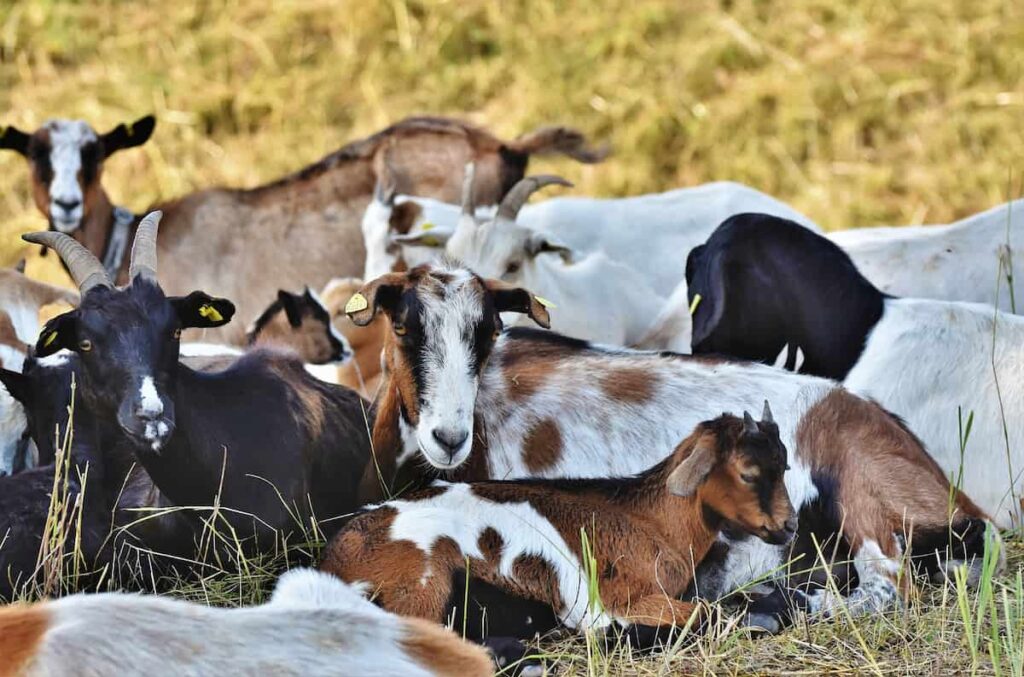
They provide milk, meat, and fiber essential to the livelihoods of many people on the continent. Indigenous veld goats can be a valuable source of income for small-scale farmers. Goats can also be used as draft animals, helping farmers to plough their fields or carry heavy loads.
Indigenous veld goat farming in Africa
What are indigenous veld goats?
Indigenous veld goats are a type of goat that is native to Africa. They are well-adapted to the harsh conditions of the African savanna and are, therefore, well-suited for farming in this region.
Main types of indigenous veld goats in Africa
- The African wild goat is the more common breed in many parts of Africa. They are typically brown or black, with short hair and horns. African wild goats are known for their hardiness and can survive in harsh conditions that would kill other domesticated animals.
- The Nubian goat is native to the Horn of Africa, characterized by its long ears and wide body. Nubian goats are usually white or light-colored, with longer hair than African wild goats. They produce less milk than other breeds of domestic goats, but their milk is higher in fat content.
The history of Indigenous veld goats in Africa
- These versatile animals have been used for everything from food and fiber to transportation and trade.
- Veld goats are thought to have originated in Ethiopia, where they first domesticated some 4,000 years ago. They spread throughout the continent, adapting to various climates and ecosystems.
- In many parts of Africa, veld goats are still an important part of life. They provide milk, meat, and skins used for clothing and shelter. Their dung is used as fuel and fertilizer. And their strong legs make them ideal beasts of burden.
- Throughout their history, veld goats have been an essential part of African culture and economy. They will likely continue to play a vital role in the continent’s future.
In case you missed it: How to Start Goat Farming from Scratch: A Complete Guide for Beginners
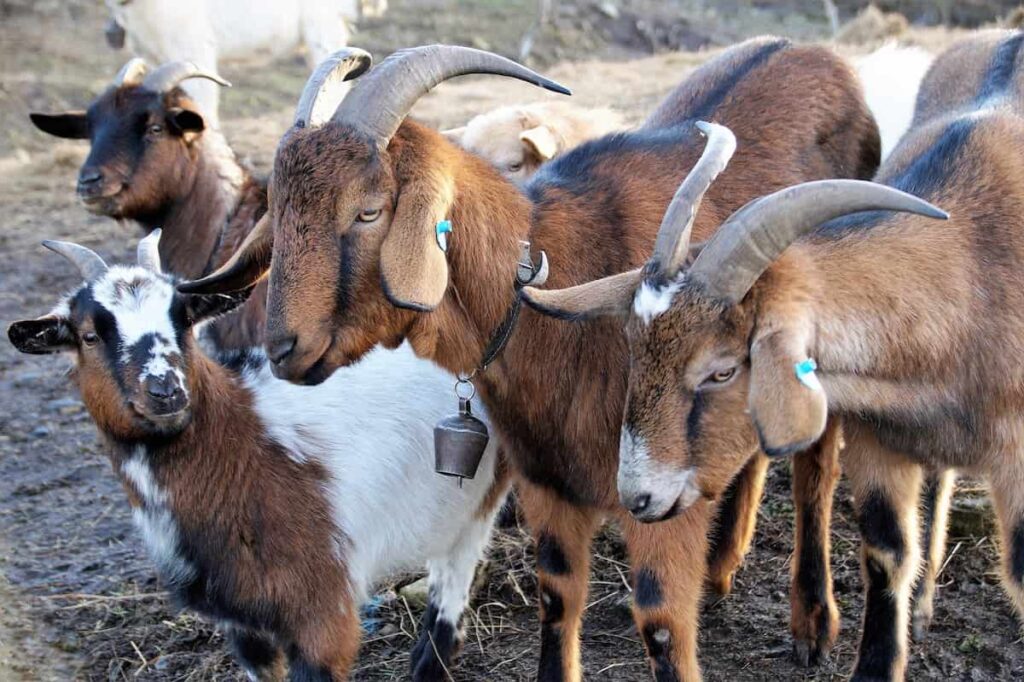
The benefits of farming indigenous veld goats
- There are many advantages to farming indigenous veld goats in Africa. They are well adapted to the harsh conditions of the African climate and require little input in terms of feed and water. They are also resistant to diseases that plague other types of livestock.
- The benefits of farming veld goats are many and varied. They include providing a source of food and income for small-scale farmers and contributing to conserving our natural resources.
- In addition to their economic value, veld goats also play an important role in conserving our natural resources. Their browsing habits help to keep vegetation healthy and prevent soil erosion. By promoting veld goat farming, we can help to ensure the long-term sustainability of Africa’s landscapes.
- They are well-adapted to the local climate and environment, requiring less water and feed than other types of livestock. They also have high disease resistance, making them less likely to get sick and pass on illnesses to humans.
- Indigenous veld goats are an important food source and income for many African families. Goats provide milk, meat, and skins, which can be sold or used to make clothing and other products.
- Overall, farming indigenous veld goats provides many benefits for African communities. It is a sustainable and profitable enterprise that can help alleviate poverty while benefiting the environment.
- Indigenous goats are also an important source of food for many African families. Goat meat is nutritious and affordable and can be prepared in various ways. Goat milk is also a valuable commodity, providing essential nutrients and calories for children and adults alike.
- Finally, indigenous goats provide a much-needed income stream for many rural African households. Goats can be sold for their meat, milk, or skins, which are used to make leather goods. This income can be vital in helping families escape poverty and build a better future.
Indigenous goats farming requirements
- Indigenous goats are hardy and adaptable animals that can be farmed in various environments. They require little in the way of housing or infrastructure and can be managed using traditional husbandry practices.
- Goats are browsing animals and prefer to eat foliage rather than grass. They will also eat various other plants, including shrubs and herbs. A healthy diet for goats includes various plant species to ensure they get the necessary nutrients.
- Water is an important requirement for goats, especially in hot climates. They need access to clean, fresh water at all times and will drink up to 3 liters daily. Goats will also consume significant quantities of salt, so access to a salt lick or mineral supplement is important.
- Goats are social animals and do best when kept in groups. They form strong bonds with other members of their herd and become stressed when isolated. Therefore, when planning your goat farming operation, ensure you have enough space to accommodate the number of goats you intend to keep.
In case you missed it: 19 Key Rules for Effective Goat Farm Management: From Planning to Reducing Production Cost
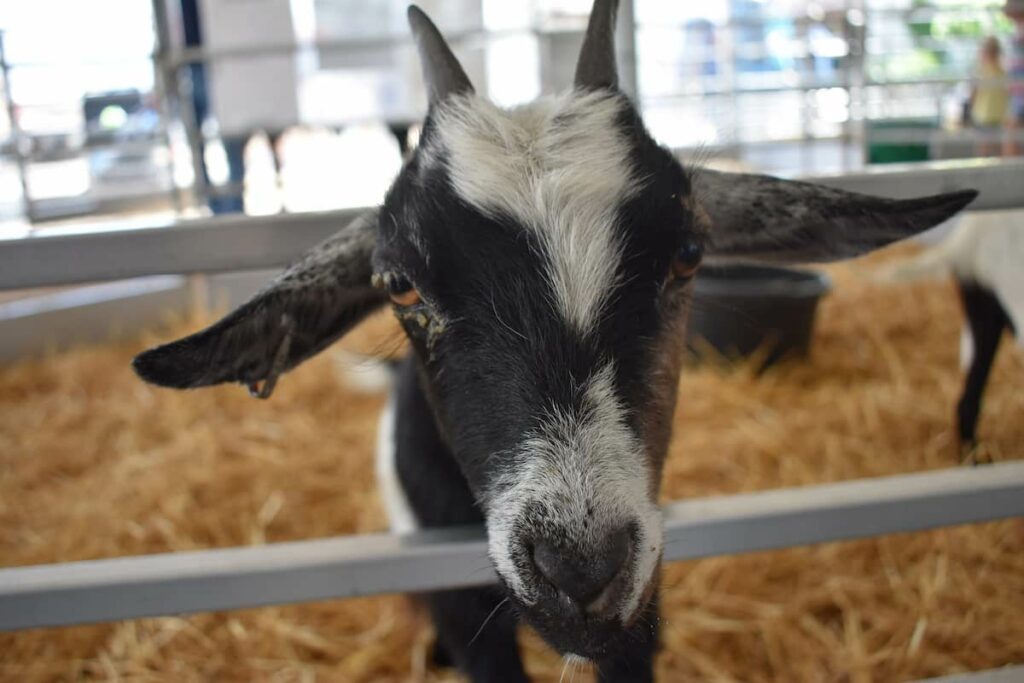
Equipment required for Indigenous Goats farming
- Indigenous goats are well adapted to the African environment and don’t require any special equipment for farming. However, a few things will make your life easier and help you get the most out of your herd.
- Firstly, you’ll need a good stock fence to keep your goats in and predators out. Goats are curious creatures who try to escape if given a chance, so a strong fence is essential.
- Secondly, you’ll need a shelter for your goats to protect them from the harsh African sun and rain. Again, a simple three-sided shed will suffice but ensure plenty of ventilation to prevent heat stress in the summer months.
- Thirdly, you’ll need some goat handled to help you with routine tasks such as hoof trimming and injections. Again, there are many different types available on the market, so choose one that suits your needs and budget.
- Finally, you’ll need a good supply of hay or pasture for your goats to graze on. Goats prefer a diet of leaves and shrubs rather than grass. So make sure you have enough food to keep your goats healthy and happy.
Indigenous Goat breeds in Africa
There are many different types of indigenous goats found in Africa. The most common include the following:
Boer Goat
This South African breed is popular for its milk and meat production. The Boer goat is the most popular breed in Africa. The Boer goat is also used for dairy production and is considered one of the best milk producers among all goat breeds.
Kiko Goat
This New Zealand breed is known for its high resistance to parasites and diseases. It has a white or cream-colored coat with black spots.
Somali Goat
This East African breed is prized for its milk production. It has long, curved horns and a reddish-brown coat. The Somali goat is native to Somalia, Ethiopia, and Kenya. It is a small breed known for its high-quality milk and meat. The Somali goat is also used as a pack animal due to its small size and sturdy build.
Savanna
The Savanna is the most widespread of the three breeds in sub-Saharan Africa. The breed is well adapted to hot, dry climates and has good disease resistance. Savannas come in various colors: black, brown, spotted, and white.
Zulu Goat
This South African breed is known for its hardiness and milk production. It has dark brown or black fur with white patches on the face and legs.
In case you missed it: How to Start Goat and Sheep Farming in United Arab Emirates (UAE): A Stall Feed Guide for Beginners
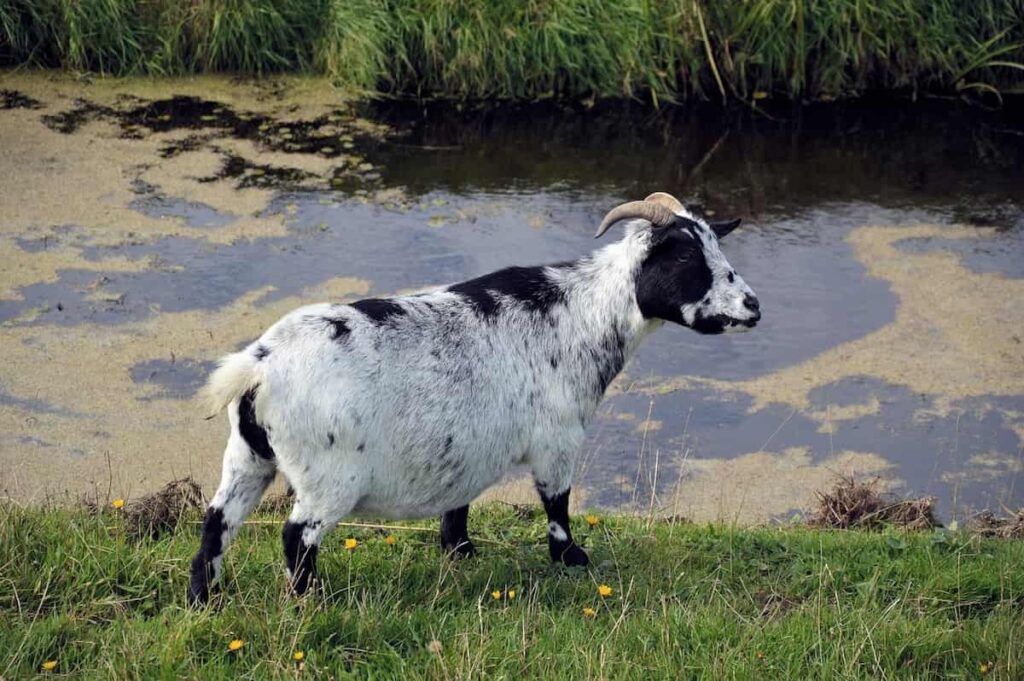
Kalahari Red goat
The Kalahari Red goat is native to the Kalahari Desert region of Botswana, Namibia, and South Africa. It is a hardy goat breed that can withstand harsh conditions and has good disease resistance. The Kalahari Red goat is mostly used for meat production but can also be used for dairy purposes.
Angora
The Angora goat is native to Turkey but has been introduced to many other parts of the world, including Africa. It is a medium-sized breed with long, silky hair used to make mohair wool.
How to start an indigenous veld goat farm?
- Starting a veld goat farm can be a rewarding and lucrative business venture. However, there are several factors to consider when starting a goat farm business, such as the type of goats you will raise, the climate in which you live, and the market for goat meat and products.
- The climate you live in will also affect what type of goats you can raise. For example, raising Boer Goats will be more difficult if you live in a hot, dry climate, as they are not well-suited for these conditions.
- Finally, you need to consider the market for goat meat and products before starting your farm. There is a growing demand for meat in Africa and other parts of the world, so if you can produce high-quality goat meat, you should have no problem finding buyers. There is also a demand for goat milk and other products made from goat milk, such as cheese and yogurt.
Steps to start an Indigenous veld goat farm
- There are several factors to consider when starting an Indigenous veld goat farm. The main step is to select the right location. The location must have good grazing land and water sources. It should also be close to markets where the goats can be sold.
- The next step is to select the right breed of goat. There are many different breeds of Indigenous veld goats, so it is important to research to find the best breed for your climate and desired production goals.
- Once you have chosen a location and breed, you must purchase some goats. Goats can be bought from other farmers, at livestock auctions, or online. Once you have your goats, they will need to be quarantined for 30 days before being released into the pasture.
- After the quarantine period, you must provide shelter for your goats. Goats require a shelter that protects them from the elements and predators. The shelter should also have enough space for the goats to move freely.
- Indigenous veld goats are hardy animals that can thrive in harsh conditions but still require some basic care. They will need to be fed a balanced diet and access to fresh water. They must also be vaccinated against common diseases such as rabies and foot-and-mouth disease.
In case you missed it: How to Make Goat Manure Compost: A Step-by-Step Guide to Using in Your Garden/Farm
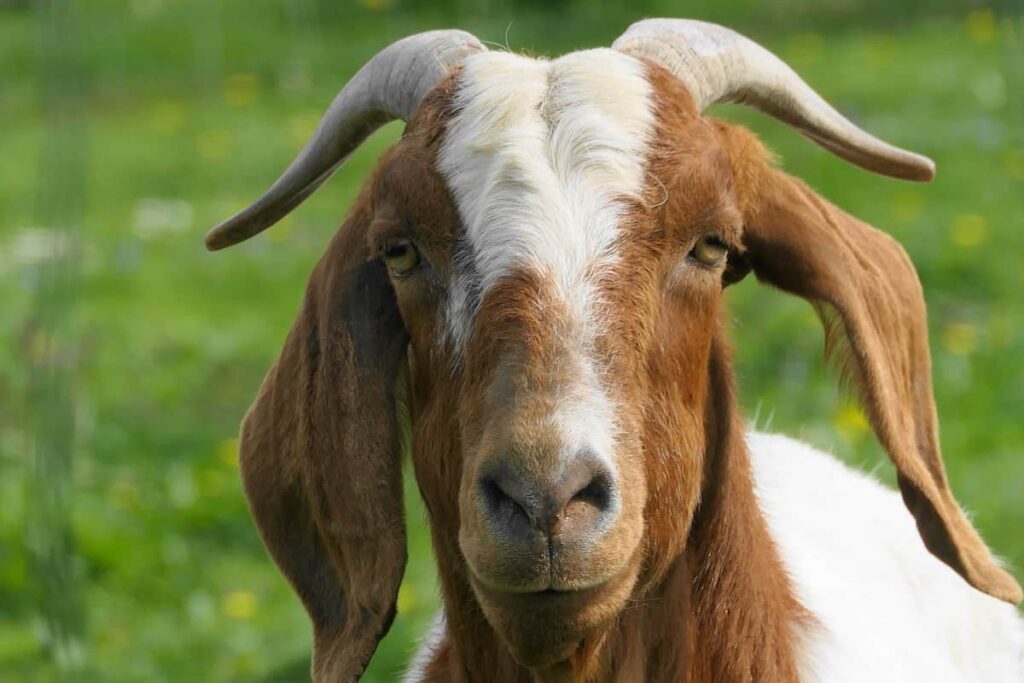
Indigenous goats care in Africa
Indigenous goats are an important part of African food security and livelihoods. In many parts of Africa, they are the only source of milk and meat for families. Goats also provide valuable manure for crops and help to clear land. However, indigenous goats are often neglected and not given the same care as other livestock. This is because they are often seen as unproductive and not worth investing in. As a result, many indigenous goat breeds are at risk of extinction. However, several things can be done to improve the care of indigenous goats in Africa:
Improve access to veterinary care
Many farmers do not have quality veterinary care for their goats. This needs to be improved so farmers can identify and treat health problems early on.
Improve nutrition
Good nutrition is essential for all livestock, especially goats susceptible to malnutrition. In addition, improved fodder availability and quality will help to improve goat health and productivity.
Improve housing
Goats need shelter from the wind, sun, and rain. Improving housing conditions will help to protect them from extreme weather conditions and parasites.
Improve breeds
There is a need for more research into indigenous goat breeds to identify which ones are at risk of extinction and how best to conserve them.
Indigenous goat farming problems in Africa
- Indigenous goats are an important source of livelihood for many small-scale farmers in Africa. However, they are also susceptible to various diseases and parasites, which can lead to significant losses in productivity.
- One of the main problems faced by indigenous goat farmers is the lack of access to veterinary services. In many parts of Africa, no qualified veterinarians can diagnose and treat diseases in goats. This often leads to farmers having to rely on traditional methods of treatment, which are often ineffective.
- Another problem faced by indigenous goat farmers is the high cost of feed. Goats require a high-quality diet to stay healthy and productive, but many small-scale farmers cannot afford to purchase the necessary feeds. As a result, their goats often become malnourished, which further reduces their productivity.
- Finally, another significant challenge indigenous goat farmers face is the prevalence of predators. Large carnivores such as lions and leopards often prey on goats, which can cause significant losses in flock size. In addition, smaller predators such as jackals and hyenas also pose a threat to goats, particularly young kids.
In case you missed it: Goat Farming Loan in India: How to Get, Interest Rate, Documents for Banks, Mudra, and NABARD
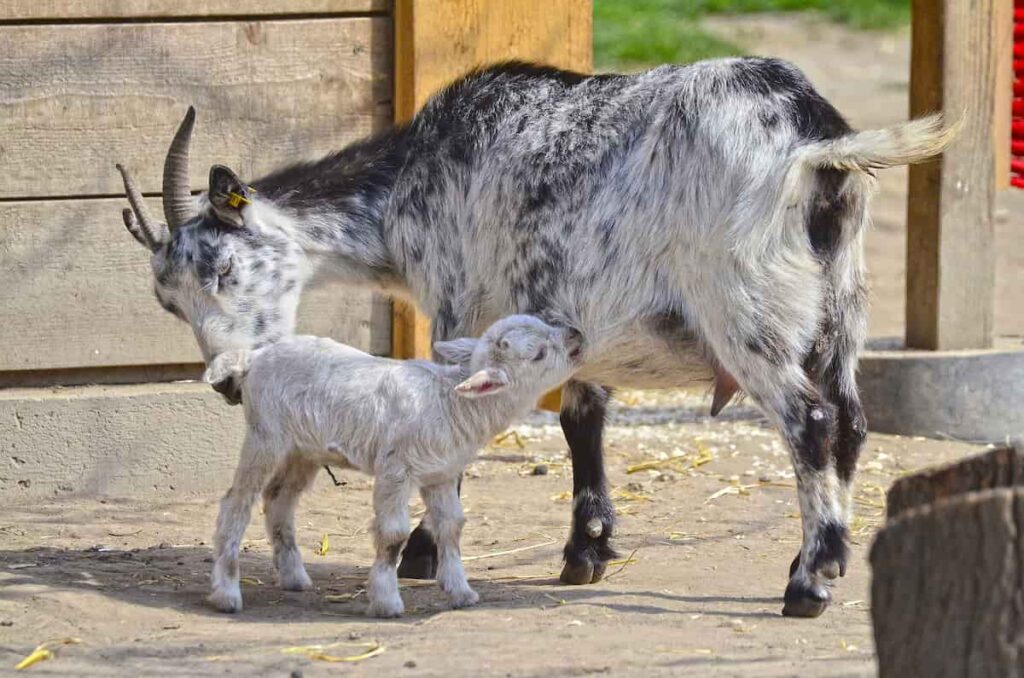
Indigenous Goat production in Africa
Indigenous goats are an important part of African agriculture and provide a vital source of income for many small-scale farmers. Goats are well-adapted to the harsh conditions in much of Africa and can be raised on marginal land unsuitable for other livestock. Moreover, they are hardy animals that can subsist on a diet of native grasses and browse. As a result, indigenous goats are the main source of meat, milk, and fiber for millions across Africa.
The biggest challenge facing goat farmers in Africa is a disease. Lack of access to veterinary services and affordable vaccines means that many farmers lose large numbers of goats to preventable diseases each year. Foot-and-mouth disease is particularly problematic and can decimate herds if left unchecked.
Investing in disease prevention and control measures is essential for the sustainable development of indigenous goat farming in Africa. In addition, improving access to quality veterinary care and investing in research to develop more effective vaccines are key priorities for the sector’s future.
The challenges of farming indigenous veld goats in Africa
The main challenge of farming veld goats is the African environment itself. Most of Africa is arid or semi-arid, making it difficult to grow crops and graze livestock. A lack of infrastructure also makes transporting goods and services difficult. Another challenge is the limited availability of water. In many parts of Africa, water is scarce and expensive.
As a result, it isn’t easy to irrigate crops and provide water for livestock animals. Finally, another challenge facing goat farmers is the lack of market access. Many small-scale farmers live in remote areas, making it difficult to sell their products. They also often lack the resources to invest in marketing and distribution networks.
How to overcome the challenges of farming veld goats?
Farming veld goats can be challenging, but there are ways to overcome the challenges. One way is to choose the right breed of goat for your area. Another way is to provide shelter and food for the goats. And finally, you need to manage the goats carefully.
Conclusion
Indigenous veld goats are an important source of food security and livelihoods for many African small-scale farmers. Indigenous veld goats are a hardy breed that can thrive in harsh conditions, making them well-suited to Africa’s often challenging climate. They are also an efficient converter of feed into meat, requiring less pasture than cattle or sheep. This makes them ideal for small-scale farmers who may not have access to large tracts. In addition, veld goats are known for their ability to produce high-quality milk and meat.
- Economical Aquaculture: A Guide to Low-Budget Fish Farming
- 15 Common Planting Errors That Can Doom Your Fruit Trees
- How to Make Houseplants Bushy: Effective Tips and Ideas
- Innovative Strategies for Boosting Coconut Pollination and Yield
- Pollination Strategies for Maximum Pumpkin Yield
- The Complete Guide to Chicken Fattening: Strategies for Maximum Growth
- Natural Solutions for Tulip Problems: 100% Effective Remedies for Leaf and Bulb-Related Issues
- Revolutionizing Citrus Preservation: Towards a Healthier, Greener Future
- Natural Solutions for Peony Leaf and Flower Problems: 100% Effective Remedies
- Maximizing Profits with Avocado Contract Farming in India: A Comprehensive Guide
- Natural Solutions for Hydrangea Problems: 100% Effective Remedies for Leaf and Flowers
- The Ultimate Guide to Choosing the Perfect Foliage Friend: Bringing Life Indoors
- From Sunlight to Sustainability: 15 Ways to Use Solar Technology in Agriculture
- The Ultimate Guide to Dong Tao Chicken: Exploring from History to Raising
- The Eco-Friendly Makeover: How to Convert Your Unused Swimming Pool into a Fish Pond
- Mastering the Art of Delaware Chicken Farming: Essentials for Healthy Backyard Flocks
- 20 Best Homemade Fertilizers for Money Plant: DIY Recipes and Application Methods
- How to Craft a Comprehensive Free-Range Chicken Farming Business Plan
- Brighten Your Flock: Raising Easter Egger Chickens for Beauty and Bounty
- How to Optimize Your Poultry Egg Farm Business Plan with These Strategies
- Subsidy for Spirulina Cultivation: How Indian Government Schemes Encouraging Spirulina Farmers
- Ultimate Guide to Raising Dominique Chickens: Breeding, Feeding, Egg-Production, and Care
- Mastering the Art of Raising Jersey Giant Chickens: Care, Feeding, and More
- Ultimate Guide to Raising Legbar Chickens: Breeding, Farming Practices, Diet, Egg-Production
- How to Raise Welsummer Chickens: A Comprehensive Guide for Beginners
- How to Protect Indoor Plants in Winter: A Comprehensive Guide
- Ultimate Guide to Grow Bag Gardening: Tips, Tricks, and Planting Ideas for Urban Gardeners
- Guide to Lotus Cultivation: How to Propagate, Plant, Grow, Care, Cost, and Profit
- Agriculture Drone Subsidy Scheme: Government Kisan Subsidy, License, and How to Apply Online
- Ultimate Guide to Raising Araucana Chickens: Breed Profile, Farming Economics, Diet, and Care
- Bringing Hydroponics to Classroom: Importance, Benefits of Learning for School Students
- Ultimate Guide to Raising Polish Chickens: Breed Profile, Farming Economics, Diet, and Care
- Ultimate Guide to Raising Australorp Chickens: Profile, Farming Economics, Egg Production, Diet, and Care
- Silkie Chicken Farming: Raising Practices, Varieties, Egg Production, Diet, and Care
- Sussex Chicken Farming: Raising Practices, Varieties, Egg Production, Diet and Care
- Homemade Feed Formulations for Livestock: Discover Cost-effective Starter to Finisher Feed Recipes